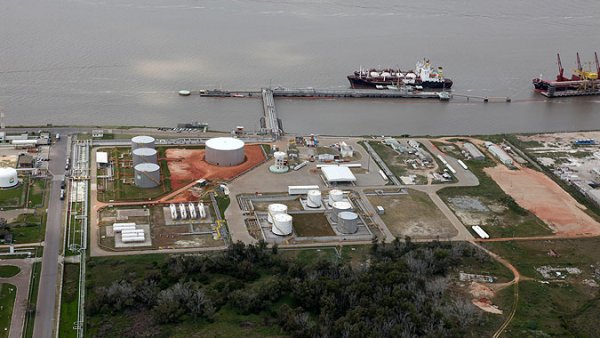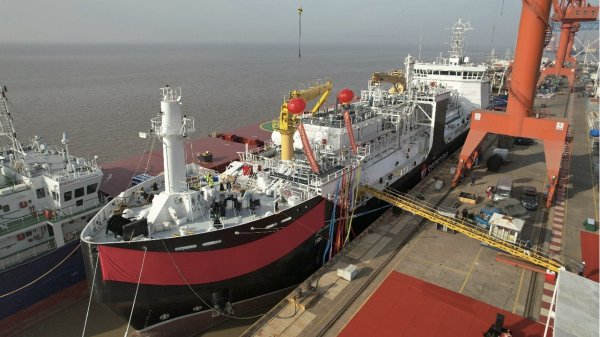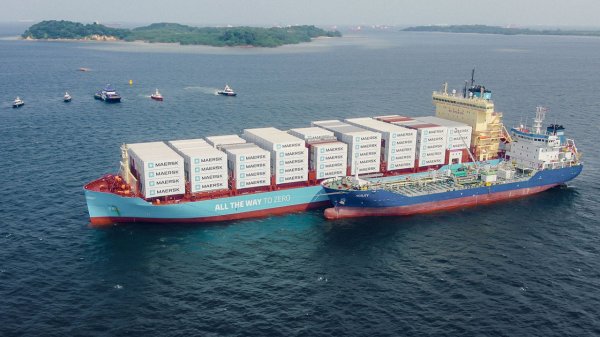A bright future for low-flashpoint fuels?
Larry Rumbol, Marine Condition Monitoring Manager at Parker Kittiwake, writes for Bunker Index.
Clothing trends come and go. What was stylish in your childhood will end up back on the catwalk by the time you have children. After being in vogue a few years ago, it could equally be said that lower flashpoint fuel is coming back into fashion.
At SIBCON seven years ago, Niels Henrik Lindegaard from Maersk Oil Trading cautioned his audience about the challenges shipping would face unless it worked together to prepare for the global sulphur regulation. It would, "face potentially crippling costs". The man who is now Managing Director of Maersk Oil Trading went on to suggest that inland gas oil could play a substantial role bridging the transition from HFO because of its wider availability than traditional marine gasoil (MGO). Nonetheless, as it would have done seven years ago, this change would require a regulatory amendment. Under the IMO's current rules, MGO has a minimum flashpoint of 60 Deg C, whereas for inland gas oil it's 55 Deg C.
The technology and knowledge of safe fuel handling has come a long way since the IMO rules regarding flashpoint were created in 1974. Indeed the 60 Deg C minimum flashpoint limit for general service fuels given in the SOLAS Convention only came in with the 1981 amendments, and the first three SOLAS Conventions placed no limit on fuel flashpoint. Moreover, when it was first introduced in 1960, there was a 43 Deg C minimum limit that applied only to 'new' passenger vessels.
Flashpoint is the temperature at which vapours are given off that can ignite when an external flame is applied under standard conditions. As such, the rules on flashpoint are designed to reduce the risk of fire during standard handling and storage. Because of its status as a useful indicator of fire hazard level, it's considered a critical safety parameter. To take one well-known example, ISO8217 Grade DMX, a special low cloud point gasoil, may only be stored onboard in drums because of its less than 60 Deg C flashpoint.
In full knowledge of this, the official study presented at MEPC 70 said that a decrease in the minimum flashpoint of fuel oil "would certainly help improve fuel availability" to meet the 0.5% sulphur limit. So when officials at MSC 98, including Brazil and Chile, voiced concerns about the effects the 2020 low sulphur requirement could have upon safety on board, specifically with regard to fuel flashpoint, it shouldn't have come as a complete surprise. Nonetheless with October 23, 2017 marking 800 days until 2020, it's easy to see why many in shipping are discouraged with the slow progress.
Frustration isn't confined to working group sessions at 4 Albert Embankment in London. In July this year, global fuel testing company Veritas Petroleum Services said that it was on track to issue a record number of bunker alerts in 2017, based on the number it issued in the first half of the year. The most common problematic parameter for distillates? Flashpoint. This matters because even a small amount of a low-flashpoint blend component could cause the resultant blend to be off spec, and potentially violate a charterparty or insurance policy.
Fuel quality management helps protect not only the vessel but also the crew and the environment, as not testing fuel prior to burning raises the chances of poorer quality fuel causing costly damage or equipment failure on board.
One way to combat this issue is the Parker Kittiwake Flashpoint Tester. It's easy to use, completing a fuel flash/no-flash test in less than two minutes, and will determine the flashpoint of a sample within a temperature range of 0 to 300 Deg C, typically in less than eight minutes.
As well as having a digital display showing test parameters, instrument status, and the flashpoint test result, it only requires a two to four ml sample, and has an automatic flash detector to enhance repeatability and reduce the chance of misinterpretation.
When we draw inspiration from the best of the past, we give ourselves the opportunity to benefit from hindsight and execute more fluently. With distance comes perspective.
Larry Rumbol is Marine Condition Monitoring Manager at Parker Kittiwake - a leading expert on asset protection and the testing and analysis of fuels and oils. For almost a quarter of a century, the company has been designing, developing and manufacturing condition monitoring and test equipment for lube oil, hydraulic oil and fuels. Thousands of vessels have Parker Kittiwake equipment on board that is used by seafarers every day to gain vital information on engine and equipment health, and to test fuel quality and compatibility.
With annual sales of $11 billion in fiscal year 2016, Parker Hannifin is the owner of Parker Kittiwake and the world's leading diversified manufacturer of motion and control technologies and systems, providing precision-engineered solutions for a wide variety of mobile, industrial and aerospace markets.
To find out more about the products and services offered by Parker Kittiwake, please visit kittiwake.com.
At SIBCON seven years ago, Niels Henrik Lindegaard from Maersk Oil Trading cautioned his audience about the challenges shipping would face unless it worked together to prepare for the global sulphur regulation. It would, "face potentially crippling costs". The man who is now Managing Director of Maersk Oil Trading went on to suggest that inland gas oil could play a substantial role bridging the transition from HFO because of its wider availability than traditional marine gasoil (MGO). Nonetheless, as it would have done seven years ago, this change would require a regulatory amendment. Under the IMO's current rules, MGO has a minimum flashpoint of 60 Deg C, whereas for inland gas oil it's 55 Deg C.
The technology and knowledge of safe fuel handling has come a long way since the IMO rules regarding flashpoint were created in 1974. Indeed the 60 Deg C minimum flashpoint limit for general service fuels given in the SOLAS Convention only came in with the 1981 amendments, and the first three SOLAS Conventions placed no limit on fuel flashpoint. Moreover, when it was first introduced in 1960, there was a 43 Deg C minimum limit that applied only to 'new' passenger vessels.
Flashpoint is the temperature at which vapours are given off that can ignite when an external flame is applied under standard conditions. As such, the rules on flashpoint are designed to reduce the risk of fire during standard handling and storage. Because of its status as a useful indicator of fire hazard level, it's considered a critical safety parameter. To take one well-known example, ISO8217 Grade DMX, a special low cloud point gasoil, may only be stored onboard in drums because of its less than 60 Deg C flashpoint.
In full knowledge of this, the official study presented at MEPC 70 said that a decrease in the minimum flashpoint of fuel oil "would certainly help improve fuel availability" to meet the 0.5% sulphur limit. So when officials at MSC 98, including Brazil and Chile, voiced concerns about the effects the 2020 low sulphur requirement could have upon safety on board, specifically with regard to fuel flashpoint, it shouldn't have come as a complete surprise. Nonetheless with October 23, 2017 marking 800 days until 2020, it's easy to see why many in shipping are discouraged with the slow progress.
Frustration isn't confined to working group sessions at 4 Albert Embankment in London. In July this year, global fuel testing company Veritas Petroleum Services said that it was on track to issue a record number of bunker alerts in 2017, based on the number it issued in the first half of the year. The most common problematic parameter for distillates? Flashpoint. This matters because even a small amount of a low-flashpoint blend component could cause the resultant blend to be off spec, and potentially violate a charterparty or insurance policy.
Fuel quality management helps protect not only the vessel but also the crew and the environment, as not testing fuel prior to burning raises the chances of poorer quality fuel causing costly damage or equipment failure on board.
One way to combat this issue is the Parker Kittiwake Flashpoint Tester. It's easy to use, completing a fuel flash/no-flash test in less than two minutes, and will determine the flashpoint of a sample within a temperature range of 0 to 300 Deg C, typically in less than eight minutes.
As well as having a digital display showing test parameters, instrument status, and the flashpoint test result, it only requires a two to four ml sample, and has an automatic flash detector to enhance repeatability and reduce the chance of misinterpretation.
When we draw inspiration from the best of the past, we give ourselves the opportunity to benefit from hindsight and execute more fluently. With distance comes perspective.
Larry Rumbol is Marine Condition Monitoring Manager at Parker Kittiwake - a leading expert on asset protection and the testing and analysis of fuels and oils. For almost a quarter of a century, the company has been designing, developing and manufacturing condition monitoring and test equipment for lube oil, hydraulic oil and fuels. Thousands of vessels have Parker Kittiwake equipment on board that is used by seafarers every day to gain vital information on engine and equipment health, and to test fuel quality and compatibility.
With annual sales of $11 billion in fiscal year 2016, Parker Hannifin is the owner of Parker Kittiwake and the world's leading diversified manufacturer of motion and control technologies and systems, providing precision-engineered solutions for a wide variety of mobile, industrial and aerospace markets.
To find out more about the products and services offered by Parker Kittiwake, please visit kittiwake.com.

|
VARO Energy expands renewable portfolio with Preem acquisition
All-cash transaction expected to complete in the latter half of 2025. |
|
|
|
||

|
NYK trials biofuel in milestone coal carrier test
Vessel is used to test biofuel for domestic utility company. |
|
|
|
||

|
H-Line Shipping orders LNG bunkering vessel
Vessel with 18,000-cbm capacity to run on both LNG and MDO. |
|
|
|
||

|
How to engineer and manage green shipping fuels | Stanley George, VPS
Effective management strategies and insights for evolving fuel use. |
|
|
|
||

|
Swedish government bans scrubber wastewater discharges
Discharges from open-loop scrubbers to be prohibited in Swedish waters from July 2025. |
|
|
|
||

|
MAN Energy Solutions achieves 100% load milestone for ammonia engine
Latest tests validate fuel injection system throughout the entire load curve. |
|
|
|
||

|
Petrobras secures ISCC EU RED certification for B24 biofuel blend at Rio Grande
Blend consisting of 24% FAME is said to have been rigorously tested to meet international standards. |
|
|
|
||

|
Stolt-Nielsen to fully control Avenir LNG with acquisition
Share purchase agreement to buy all shares from Golar LNG and Aequitas. |
|
|
|
||

|
Bureau Veritas supports launch of CIMC SOE's LNG bunkering vessel
Handover of Seaspan Energy's cutting-edge 7,600-cbm vessel completed. |
|
|
|
||

|
Methanol as a marine fuel | Steve Bee, VPS
How environmental legislation has driven the development of low-sulphur fuels and methanol-ready ships. |
|
|
|
||
Related Links
- · Parker Kittiwake launches 'definitive guide to fuel and lube oil' [Insights]
- · Simplex-Turbulo named distributor of Parker Kittiwake's bunker products [Insights]
- · Draft ISO standard 'lends further protection to the bunker supplier' [Insights]
- · Norbulk orders onboard cat fines test kit [Insights]
- · United Kingdom [Directory]

